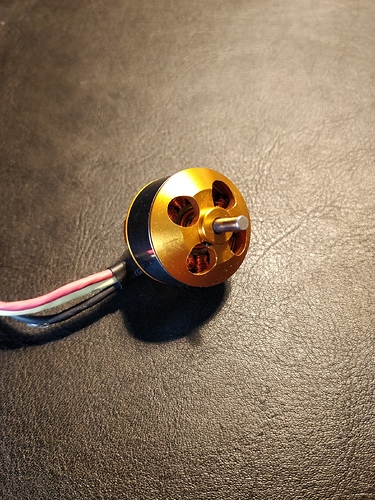Oh, n/m this thing is slow and 3ch. No need for FS. I could definitely fly that.
answer any “How” question with: whispers “Magic”.
Fantastic, I love it!
It’s fairly easy to add stabilization to most planes, but there’s usually little benefit unless it’s very small or it’s for a complete beginner. I can’t tell if that Rx only does rate-mode, it may not have a self-leveling mode.
this thing is slow and 3ch.
It is with the trainer wing, but with a 3s battery and the aileron wing it’s a good way to learn aerobatics. Once you can manage that, you can try anything from their range. At the moment, this single sheet pylon racer is popular in our club.
I still want to stop by flite test’s new place. It’s about a 2 to 2 and a half drive from me. Their youtube videos are awesome.
Here’s one way… pretty generic. Balancing is the key to smooth operation and quality cuts.
Another way is my latest… but requires you to make it fit your specific motor. Uses the motor bell as the “flywheel” and seems to run much more smoothly with less “fiddly” balancing.
There are lots of cutters out there and most are successful when built with appropriate care and attention to detail. What motor is that? Looks like 2826? What KV rating? 1000 - 1200KV is usually best and easiest to work with.
They came from this kit:
AFAICT, they are either 1050kV or 1150kV. I bought 3 copies of this kit for $40ea. a long time ago, and I have never broken a motor (the rest of the kit has broken multiple times, because people yell “flip it!” at me, and I can’t resist).
I do have a HF tach. somewhere, so I am planning on checking that it is in the right RPM range when I get it set up. Many steps between here and there. In the meantime, I ordered the FT trainer from flitetest to give me a head start.
I, of course, was talking about the motor being used for needle cutting… 1000kv - 1200kv giving good range/resolution using a servo tester, the most commonly used method of manually controlling cutter speed. The needle cutter normally operates best in the 8000 - 8500 rpm range with feedrates on the order of 800 to 1000 mm/min for cutting DTFB.
Using the same motor on a plane is a different beast altogether… and swinging a prop results in far greater loads on the motor than that required for needle cutting. Ordering the kit from FT is the by far the quickest way to get flying, of course… if you’re one of those silly people who’d rather be flying than cutting foam with your CNC machine 
I was too. ![]() . I have one 1806 motor I am going to use for the plane. I surprisingly have just enough parts to build it.
. I have one 1806 motor I am going to use for the plane. I surprisingly have just enough parts to build it.
I am working on both angles. ![]() . My printer is not working without my attention today, so I think the plane may win. Plus, the son is home from school and he has asked about the plane about every 10 mins.
. My printer is not working without my attention today, so I think the plane may win. Plus, the son is home from school and he has asked about the plane about every 10 mins.
Thank you for your sharing, I get a new knowledge today.
